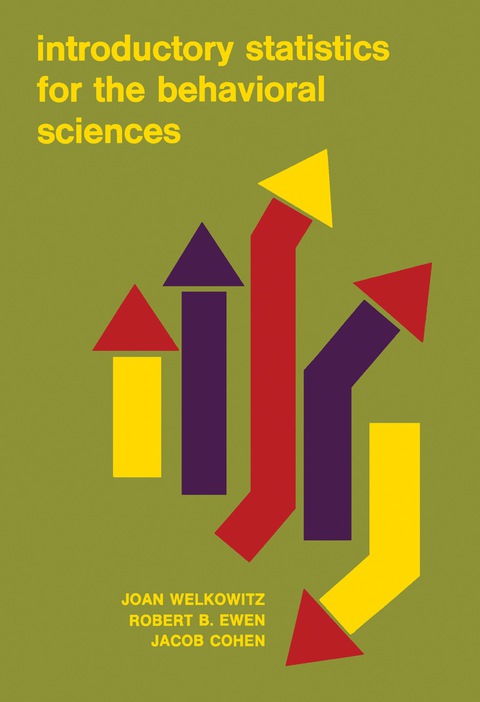Description
Efnisyfirlit
- Introductory Statistics for the Behavioral Sciences
- Copyright Page
- Table of Contents
- Dedication
- Preface
- Acknowledgments
- Glossary of Symbols
- PART I: INTRODUCTION
- Chapter 1. Introduction
- Descriptive and Inferential Statistics
- Populations, Samples, Parameters, and Statistics
- Summation Notation
- Summary
- PART II: DESCRIPTIVE STATISTICS
- Chapter 2. Frequency distributions and graphs
- The Purpose of Descriptive Statistics
- Regular Frequency Distributions
- Cumulative Frequency Distributions
- Grouped Frequency Distributions
- Graphic Representations
- Shapes of Frequency Distributions
- Summary
- Chapter 3. Transformed scores I: Percentiles
- Definition of Percentiles
- Deciles, Quartiles, and the Median
- Summary
- Chapter 4. Measures of central tendency
- The Mean
- The Median
- The Mode
- Summary
- Chapter 5. Measures of variability
- The Concept of Variability
- The Range
- The Standard Deviation and Variance
- Summary
- Chapter 6. Transformed scores II : Z and T scores
- Rules for Changing X and σ
- Standard Scores (Z Scores)
- T Scores
- SAT Scores
- Summary
- Appendix to Chapter 6 : Proofs of Rules for Changing X and σ
- PART III: INFERENTIAL STATISTICS
- Chapter 7. The general strategy of inferential statistics
- The Goals of Inferential Statistics
- The Strategy of Inferential Statistics
- Statistical Models
- Summary
- Chapter 8. The normal curve model
- Score Distributions
- Characteristics of the Normal Curve
- Illustrative Examples
- Summary
- Chapter 9. Inferences about the mean of a single population
- The Standard Error of the Mean
- Hypothesis Testing
- The Statistical Test for the Mean of a Single Population when σ Is Known
- The Statistical Test for the Mean of a Single Population when σ Is Not Known : The t Distributions
- Interval Estimation
- The Standard Error of a Proportion
- One-Tailed Tests of Significance
- Summary
- Chapter 10. Testing hypotheses about the difference between the means of two populations
- The Standard Error of the Difference
- Estimating the Standard Error of the Difference
- The t Test for Two Sample Means
- Measures of the Strength of the Relationship between the Two Variables
- Confidence Intervals for μ1 — μ2
- Using the t Test for Two Sample Means: Some General Considerations
- The t Test for Matched Samples
- Summary
- Chapter 11. Linear correlation and prediction
- Describing the Linear Relationship between Two Variables
- Testing the Significance of the Correlation Coefficient
- Prediction and Linear Regression
- Measuring Prediction Error: The Standard Error of Estimate
- Summary
- Appendix to Chapter 11 : Equivalence of the Various Formulas for r
- Chapter 12. Other correlational techniques
- The Relationship between Ranked Variables: The Spearman Rank-Order Correlation Coefficient
- The Relationship between One Dichotomous and One Continuous Variable
- The Relationship between Two Dichotomous Variables
- Summary
- Chapter 13. Introduction to power analysis
- Concepts of Power Analysis
- The Test of the Mean of a Single Population
- The Significance Test of the Proportion of a Single Population
- The Significance Test of a Pearson r
- Testing the Significance of the Difference between Independent Means
- Summary
- Chapter 14. One-way analysis of variance
- The General Logic of ANOVA
- Computational Procedures
- One-Way ANOVA with Unequal Sample Sizes
- Some Comments on the Use of ANOVA
- Summary
- Appendix to Chapter 14 : Proof That Total Variance is Equal to the Sum of between-Group and within-G
- Chapter 15. Introduction to factorial design: Two-way analysis of variance
- Computational Procedures
- The Meaning of Interaction
- Summary
- Chapter 16. Chi square
- Chi Square and Goodness of Fit: One-Variable Problems
- Chi Square as a Test of Independence: Two-Variable Problems
- Measures of Strength of Association in Two-Variable Tables
- Summary
- Appendix
- Index





